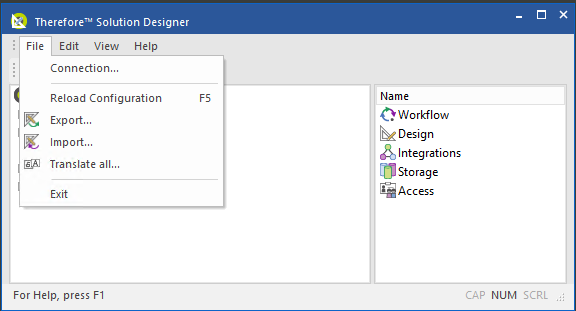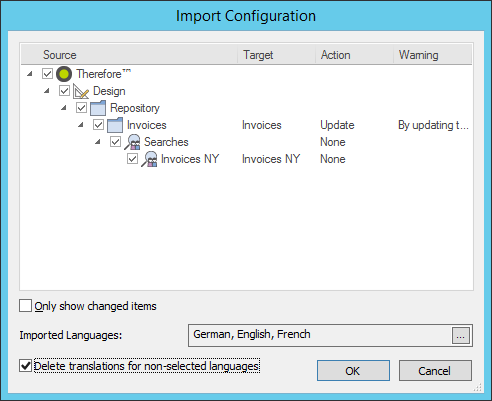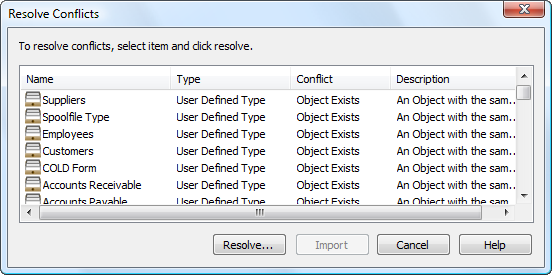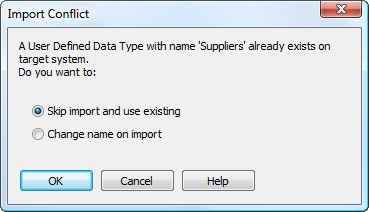It is possible to import various configuration definitions (e.g. for categories, keywords, data types, and workflow processes) created on a Thereforeā¢ system. These need to be first exported from an existing system.

|
If you use a test system to test configurations before importing them into a production system, an additional step is required when upgrading these systems to Thereforeā¢ 2015. Please refer to the Upgrade Guide for more details before upgrading either system to Thereforeā¢ 2015.
|
 How do I import a configuration?
How do I import a configuration?
1. Select the Import icon button on the toolbar (or select the File menu and then the Import... menu-item).

2.You will be prompted for a file to import. Enter the appropriate path and file name and then select the OK button. By default all items are selected for import. Items with a  will be imported. Items with a will be imported. Items with a  will not be imported. The import configuration will try to predict the most logical action for each item based on the system configuration. This is listed under the Action column and can be changed if necessary. If no changes to an item are detected, the action will be listed as "None". Warning messages about potential problems will be listed in the Warning column. Click OK when done. will not be imported. The import configuration will try to predict the most logical action for each item based on the system configuration. This is listed under the Action column and can be changed if necessary. If no changes to an item are detected, the action will be listed as "None". Warning messages about potential problems will be listed in the Warning column. Click OK when done.

|
•Refer to the Import section for more details about the various import options.
•Choosing the option Update will simply overwrite the target (existing) object with the data from the source object being imported. This means that any changes made to the target object after the configuration was exported will be overwritten when re-importing the source object. |

3.Various conflicts may arise (e.g. if the imported file has a definition with the same name as one already defined). If this occurs, a dialog will display a list of conflicts. These can be resolved by clicking on the Resolve... button.

4.In the case of a name conflict, this can either be solved by keeping the existing and not importing the object, or by changing the name.

5.In the case of a user conflict, there are two options. If you know that all or some of the users exist on the system you are exporting to, then click on Automatic Matching... This will attempt to match all users. If any other users cannot be matched, then these can be matched manually, by clicking on the field and browsing for the correct user.

|
If you want to import the categories with their folder structure, then the checkbox Include Folder Structure needs to be selected when the configuration is exported.
|
|




 will be imported. Items with a
will be imported. Items with a  will not be imported. The import configuration will try to predict the most logical action for each item based on the system configuration. This is listed under the
will not be imported. The import configuration will try to predict the most logical action for each item based on the system configuration. This is listed under the 



